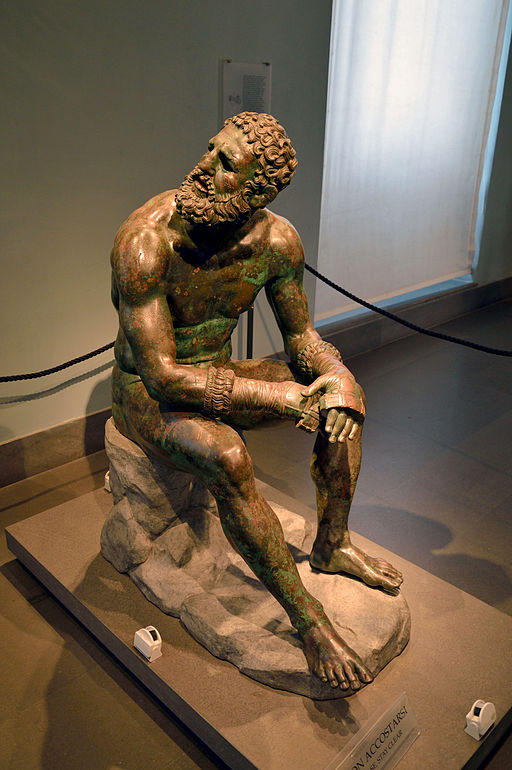The Seated Boxer, an iconic ancient Greek work of art, shows a grizzled veteran of the ring, equal parts resigned and ready to spring into action.
What I like is a sense of respite from competition, the powerful athletic physique and the tiredness that surrounds his humanity. Is he a winner this day? Are there more fights to go? How will his efforts be remembered?
These are questions that all of us encounter, in literal or figurative ways, in our daily efforts.

“The Seated Boxer is one of the most admired ancient works of art. Since it was found in 1885—on the slopes of the Quirinale, where the Baths of Constantine stood—the sculpture has provoked intense debate. Its date and maker remain unknown.” …
“And who is the figure? Some have identified him as the Boxer of Quirinal, who won at Olympia for the first time in 336 B.C. following a gruelling career of continuous defeats. Others say he is Polydamas, an athlete of legendary strength who was born in Tessaglia and then called to the court of Persia by Darius II. Yet others call him a historic figure or a heroic mythical one.” …
“Shown by the artist in the act of turning his head when something special is happening (the Greek concept of kairós), the boxer is seated, profoundly marked by deep cuts and copious bleeding all over the right side of his body. We don’t know what that turn of the head means: has he perhaps just heard the referee’s decision? Another call to fight? Is it a look at the excited crowd? Or perhaps a mute questioning of Zeus in search of some answer? The numerous controversies unleashed in the attempt to explain that gesture have informed all the mystery and poetry that has surrounded him, all the seduction of the work.”
Read the full description of the statue from the blog The Iris.
“The statue portrays a boxer seated with his arms resting on his knees, his head turned to the right and slightly raised with mouth open (fig. 4). The figure is naked except for his boxing gloves, which are of an ancient Greek type with strips of leather attached to a ring around the knuckles and fitted with woolen padding … The boxer is represented just after a match. His muscular body and full beard are those of a mature athlete, and his thick neck, lanky legs, and long arms are well suited to the sport. His face exhibits bruises and cuts. His lips are sunken as though his teeth have been pushed in or knocked out. His broken nose and cauliflower ears are common conditions of boxers, probably the result of previous fights, but the way he is breathing through his mouth and the bloody cuts to his ears and face make clear the damage inflicted by his most recent opponent. The muscles of his arms and legs are tense as though, despite the exhaustion of competition, he is ready to spring up and face the next combatant.”
Read the full description of the statue from the Met’s website.
